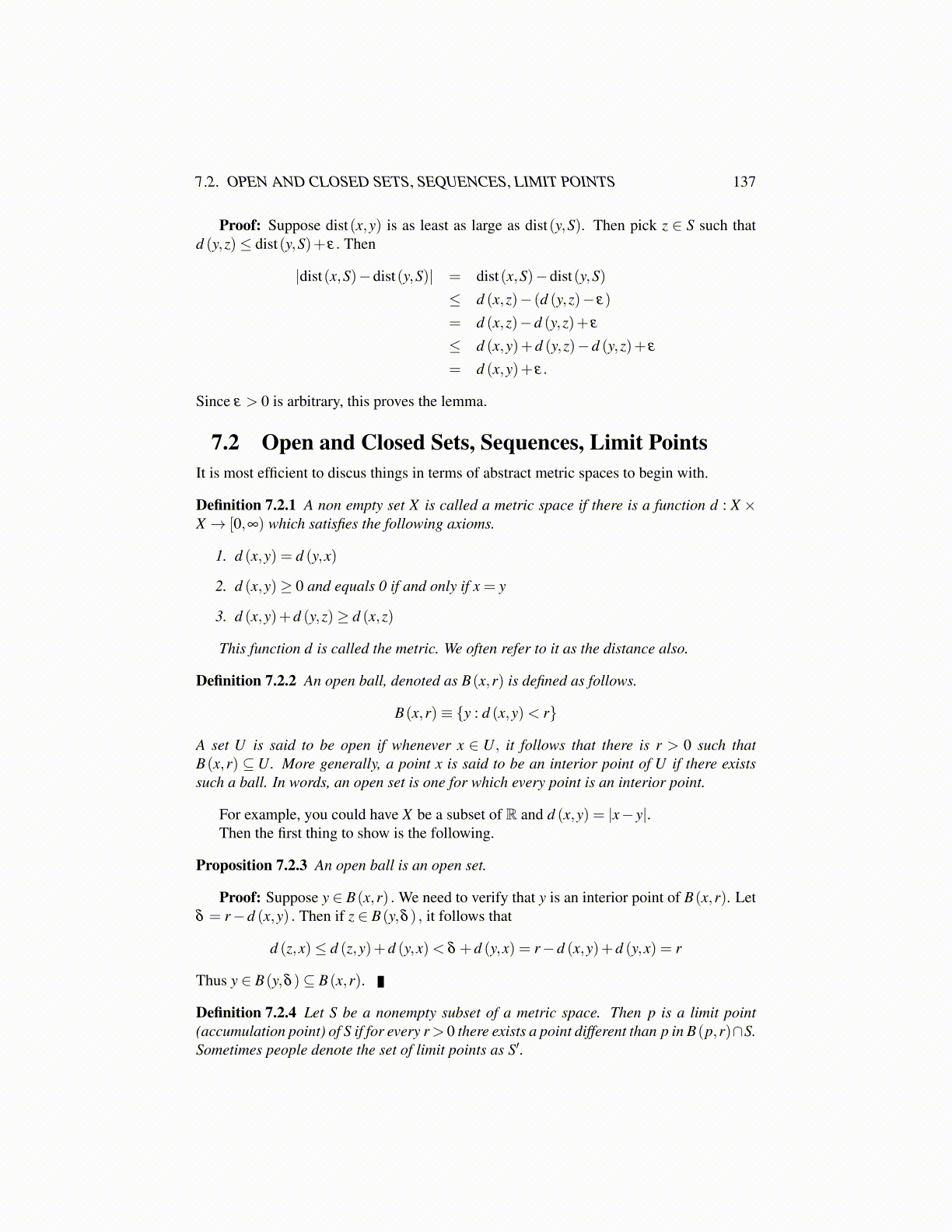
7.2. OPEN AND CLOSED SETS, SEQUENCES, LIMIT POINTS 137
Proof: Suppose dist(x,y) is as least as large as dist(y,S). Then pick z ∈ S such thatd (y,z)≤ dist(y,S)+ ε. Then
|dist(x,S)−dist(y,S)| = dist(x,S)−dist(y,S)≤ d (x,z)− (d (y,z)− ε)
= d (x,z)−d (y,z)+ ε
≤ d (x,y)+d (y,z)−d (y,z)+ ε
= d (x,y)+ ε.
Since ε > 0 is arbitrary, this proves the lemma.
7.2 Open and Closed Sets, Sequences, Limit PointsIt is most efficient to discus things in terms of abstract metric spaces to begin with.
Definition 7.2.1 A non empty set X is called a metric space if there is a function d : X ×X → [0,∞) which satisfies the following axioms.
1. d (x,y) = d (y,x)
2. d (x,y)≥ 0 and equals 0 if and only if x = y
3. d (x,y)+d (y,z)≥ d (x,z)
This function d is called the metric. We often refer to it as the distance also.
Definition 7.2.2 An open ball, denoted as B(x,r) is defined as follows.
B(x,r)≡ {y : d (x,y)< r}
A set U is said to be open if whenever x ∈ U, it follows that there is r > 0 such thatB(x,r) ⊆U. More generally, a point x is said to be an interior point of U if there existssuch a ball. In words, an open set is one for which every point is an interior point.
For example, you could have X be a subset of R and d (x,y) = |x− y|.Then the first thing to show is the following.
Proposition 7.2.3 An open ball is an open set.
Proof: Suppose y ∈ B(x,r) . We need to verify that y is an interior point of B(x,r). Letδ = r−d (x,y) . Then if z ∈ B(y,δ ) , it follows that
d (z,x)≤ d (z,y)+d (y,x)< δ +d (y,x) = r−d (x,y)+d (y,x) = r
Thus y ∈ B(y,δ )⊆ B(x,r).
Definition 7.2.4 Let S be a nonempty subset of a metric space. Then p is a limit point(accumulation point) of S if for every r > 0 there exists a point different than p in B(p,r)∩S.Sometimes people denote the set of limit points as S′.